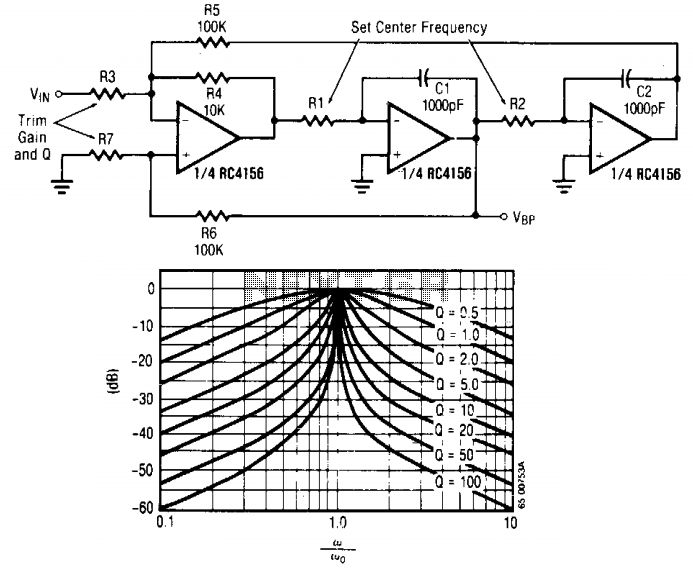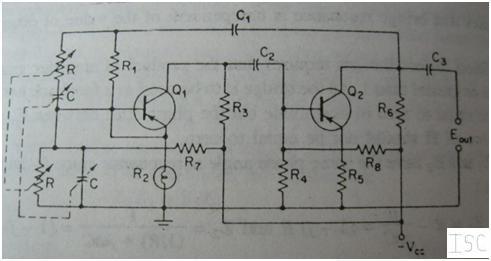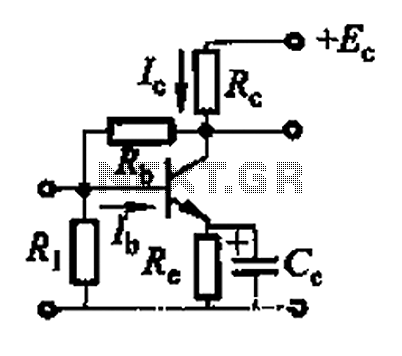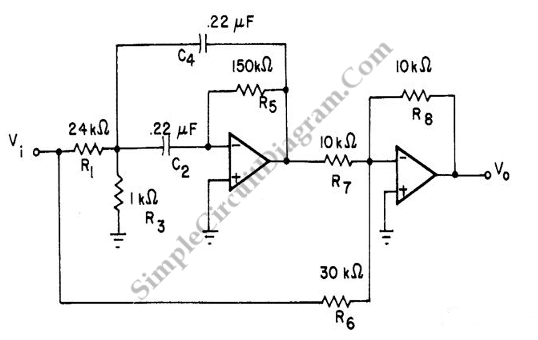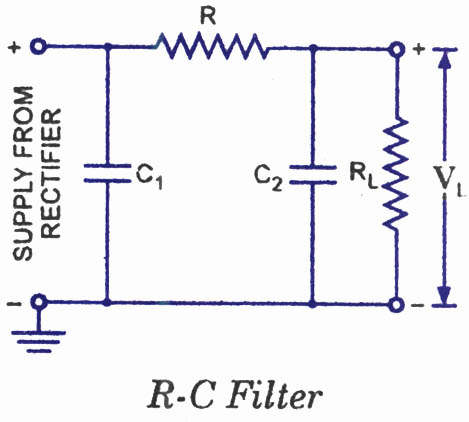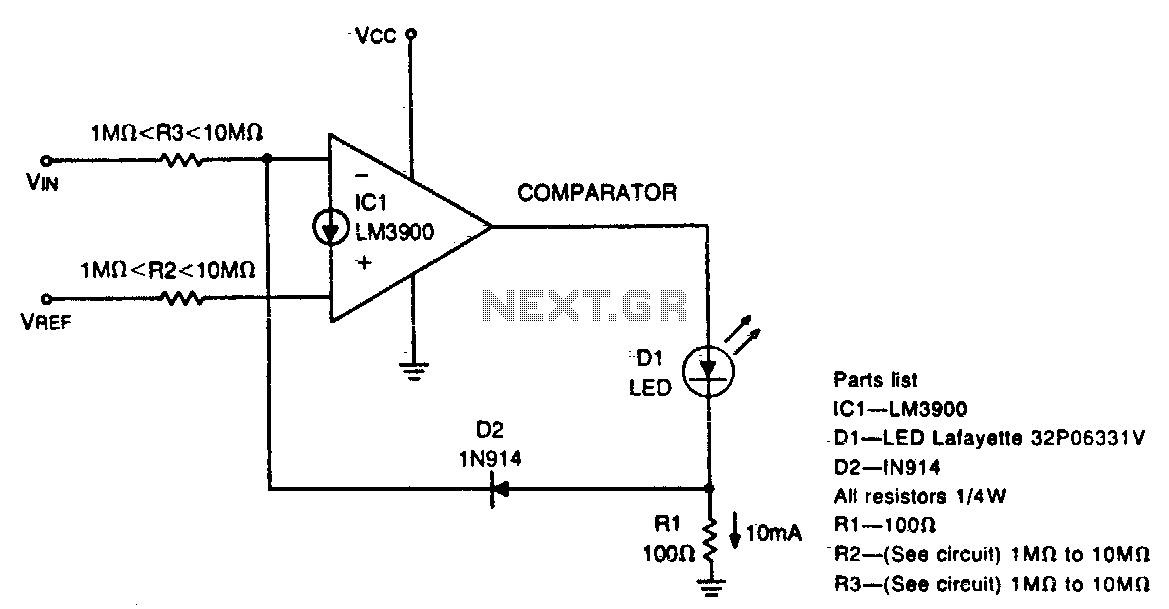
Feedback Bandpass Filter
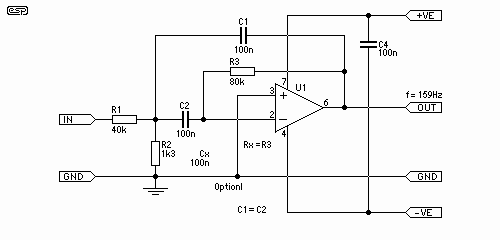
These filters are useful for equalisation, analysis and other tasks such as the Sound to Light converter (Project 62) or even a fully functional Vocoder. For those who have not heard of the vocoder, it is a device that takes a music source as one input and vocals as the other, allowing a guitar, keyboard or complete ensemble to be made to speak or sing. The "speech" from a good vocoder is quite intelligible, and is "ear candy" of the very best kind for experimental musicians. More: The source impedance must be low with respect to the input resistance, and normally these filters are driven from an opamp buffer. If a high impedance is used, it adds to the total input resistance, causing unpredictable centre frequency and response.
The described filters serve critical functions in audio processing applications, particularly in equalization and analysis tasks. They are integral components in projects such as a Sound to Light converter and a Vocoder. A Vocoder operates by taking two distinct audio inputs: a music source and vocal signals. The device modulates the music with the characteristics of the vocals, creating a unique output that can mimic speech or singing. This results in an intelligible and engaging audio experience, often referred to as "ear candy," which is especially appealing to experimental musicians seeking innovative soundscapes.
To ensure optimal performance of these filters, it is essential to maintain a low source impedance relative to the input resistance. This is typically achieved by utilizing an operational amplifier (op-amp) buffer, which isolates the filter from the source, preventing loading effects that could alter the filter's response. If a high impedance source is connected, it may increase the overall input resistance, leading to unpredictable variations in the center frequency and the overall frequency response of the filter. This instability can detrimentally affect the audio quality and the intended functionality of the Vocoder or other applications utilizing these filters.
In summary, the design and implementation of these filters require careful consideration of impedance matching and buffering to achieve reliable and high-quality audio processing results.These filters are useful for equalisation, analysis and other tasks such as the Sound to Light converter (Project 62) or even a fully functional Vocoder. For those who have not heard of the vocoder, it is a device that takes a music source as one input and vocals as the other, allowing a guitar, keyboard or complete ensemble to be made to speak or sing.
The "speech" from a good vocoder is quite intelligible, and is "ear candy" of the very best kind for experimental musicians. The source impedance must be low with respect to the input resistance, and normally these filters are driven from an opamp buffer. If a high impedance is used, it adds to the total input resistance, causing unpredictable centre frequency and response.
The 🔗 External reference
The described filters serve critical functions in audio processing applications, particularly in equalization and analysis tasks. They are integral components in projects such as a Sound to Light converter and a Vocoder. A Vocoder operates by taking two distinct audio inputs: a music source and vocal signals. The device modulates the music with the characteristics of the vocals, creating a unique output that can mimic speech or singing. This results in an intelligible and engaging audio experience, often referred to as "ear candy," which is especially appealing to experimental musicians seeking innovative soundscapes.
To ensure optimal performance of these filters, it is essential to maintain a low source impedance relative to the input resistance. This is typically achieved by utilizing an operational amplifier (op-amp) buffer, which isolates the filter from the source, preventing loading effects that could alter the filter's response. If a high impedance source is connected, it may increase the overall input resistance, leading to unpredictable variations in the center frequency and the overall frequency response of the filter. This instability can detrimentally affect the audio quality and the intended functionality of the Vocoder or other applications utilizing these filters.
In summary, the design and implementation of these filters require careful consideration of impedance matching and buffering to achieve reliable and high-quality audio processing results.These filters are useful for equalisation, analysis and other tasks such as the Sound to Light converter (Project 62) or even a fully functional Vocoder. For those who have not heard of the vocoder, it is a device that takes a music source as one input and vocals as the other, allowing a guitar, keyboard or complete ensemble to be made to speak or sing.
The "speech" from a good vocoder is quite intelligible, and is "ear candy" of the very best kind for experimental musicians. The source impedance must be low with respect to the input resistance, and normally these filters are driven from an opamp buffer. If a high impedance is used, it adds to the total input resistance, causing unpredictable centre frequency and response.
The 🔗 External reference
